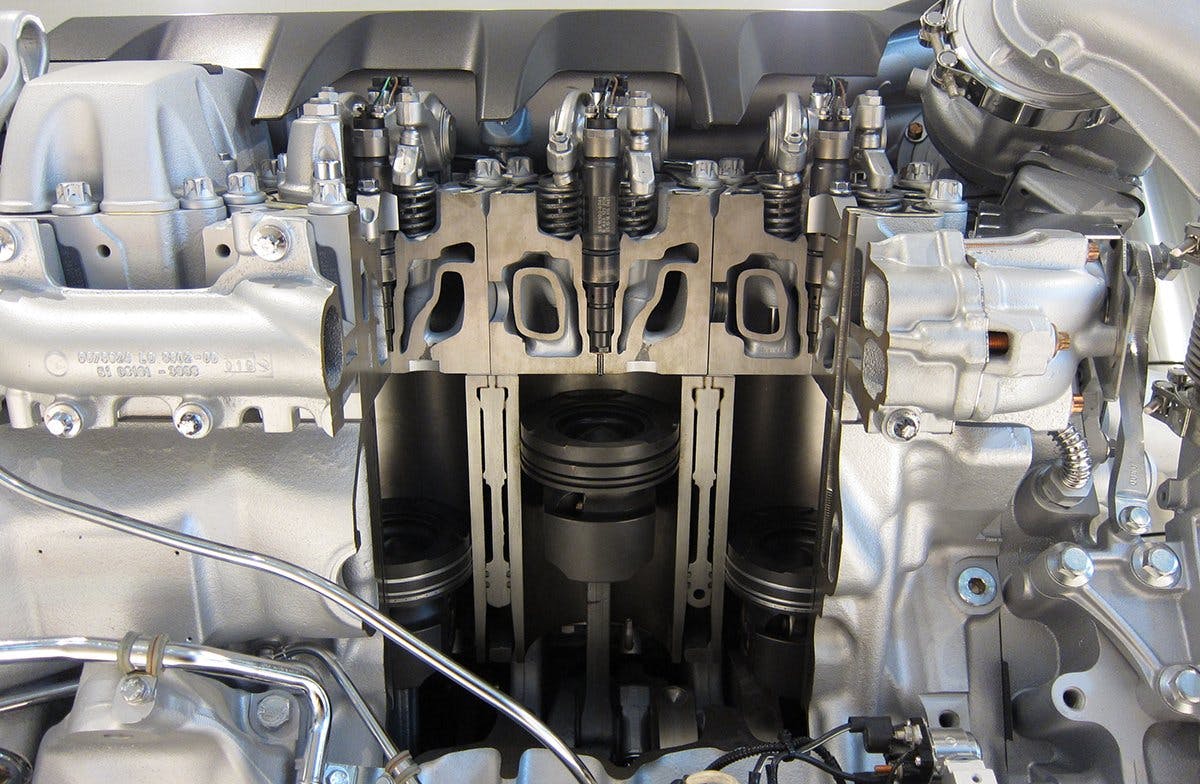Inline four-cylinder: What are its pros and cons?

An inline four-cylinder, also called a four-cylinder inline engine, is a piston combustion engine with four cylinders arranged in one row along the crankshaft.
An inline four-cylinder is often denoted by the abbreviation R4. With this engine, the cylinders can be arranged vertically to the ground, but they can also be arranged obliquely. All four pistons in the cylinders are driven by one common crankshaft.
Table des matières
Inline four-cylinder and its disadvantages
The inline four-cylinder is among the simplest engine systems with a fairly good balance. For this reason, it is very often used in economy cars. Despite its good balance, the R4's secondary imbalance leads to vibrations.
These are logically smaller with smaller engines, but the vibrations increase with increasing power and volume. This is why a larger number of cylinders or a different arrangement of cylinders are used in larger engines with a higher power.
In addition, however, the four-cylinder in-line engine also has a problem with the smoothness of operation, because the expansion strokes of the pistons do not overlap. This is because each piston completes its expansion stroke before the next piston starts a new expansion stroke, which leads to a pause between each expansion stroke and, thus, to an interruption of power delivery.
The power strokes overlap in multi-cylinder engines, resulting in less vibration and smoother performance.

Crankshaft: What is it for, and what forces must it withstand?
In some engines of this type, the crankshaft is equipped with a counterweight or balancing shaft, which balances part of the vibration with its counterweight, to improve the balance and culture of the engine.
The disadvantage of using a balance shaft is that the engine is less willing to rev since it's heavier.
Familiar inline four-cylinder configurations
The inline four-cylinder is one of the most common engine configurations, ranging from an engine displacement of 1.2 liters to 2.4 liters. However, this does not mean that this arrangement of cylinders cannot exceptionally appear in engines with a larger engine displacement, such as 2.7 l, 3.0 l, or even 3.0 liters.

Stroke volume: What is it, and what determines it?
For example, Toyota produced diesel engines in the R4 configuration with an engine displacement of up to 4.1 liters. But that's not all. The largest inline four-cylinder engine was built by the company Detroit Diesel Corporation, which was used in buses and trucks, and had an engine displacement of up to 8.5 liters.
On the other hand, one of the smallest in-line four-cylinders was used in the Mazda Carol car, while its displacement was only 0.358 liters. Even smaller R4 engines had a displacement of 0.25 l, but these were only used in motorcycles.
Inline four-cylinder and its use according to car classes
Lower middle class (for instance, Volkswagen Golf or Seat Leon)
Middle class (for instance, Volkswagen Passat or Audi A4)
Higher middle class (for example, Audi A6 or Peugeot 607)
Van (for example, Peugeot Partner or Fiat Ducato)
Advantages of an inline four-cylinder
simple construction
good compactness
low production price compared to multi-cylinder engines or engines with a different arrangement of cylinders
good balance
good engine running culture
decent performance
low engine weight
The inline four-cylinder still belongs to the most widespread type of piston combustion engine you can find under the hood of a car.